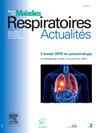低转移性、低持续性、低进展性、残余性非小细胞肺癌:我们在谈论什么?什么样的支持?
Q4 Medicine
引用次数: 0
摘要
低转移性疾病的概念是指一种转移能力有限的肿瘤类型,目前仍有一种推测性的想法,即局部区域治疗可以治愈一小部分低转移患者。这意味着在具有弥漫性转移性积液的癌症肿瘤和纯粹局限于原始器官(即肺)的肿瘤之间存在一种中间状态,也就是说,转移部位数量有限的癌症疾病,根据不同作者的定义,从1到5个转移,最常见的是不超过1到2个器官。这些概念主要来自回顾性研究、区域或国家数据库或荟萃分析,其中大多数是在靶向治疗和现代免疫治疗时代之前,表明在全身治疗中加入局部区域治疗(手术、放疗、热消融、射频)将提高生存率,尽管所有这些研究都存在争议,因为它们是回顾性设计的。前瞻性试验仍然很少,主要是2期试验,通常收集不同癌症和器官类型的患者,非小细胞肺癌患者的样本量不大,限制了它们的意义。由于新的系统性靶向治疗和免疫治疗在非小细胞肺癌中前所未有的疗效,新的概念也出现了,如寡进展、寡持续或残余肿瘤疾病,尽管以前描述过其他肿瘤类型。本综述旨在对一些复杂且有时相互矛盾的定义进行精确的梳理,综合主要回顾性研究和荟萃分析的结果,对罕见的前瞻性研究进行审查,并对可能发生的现状案例进行解读。实际上,医学上的推理是不同的根据成瘾性突变肿瘤的状态和有效的靶向治疗,或在没有成瘾性突变的病人,根据免疫或免疫化疗的反应,或根据时间点,在诊断,治疗期间,或经过两年的免疫治疗,所有这些不同的情况导致可能不同的方法,从文献的证据仍然是零碎的。本文章由计算机程序翻译,如有差异,请以英文原文为准。
Cancers bronchiques non à petites cellules oligo-métastatiques, oligo-persistance, oligo-progression, maladie résiduelle : de quoi parle-t-on ? Quelle prise en charge ?
The oligo-metastatic disease concept refers to a tumor type having a limited ability for metastazing, with the still speculative idea that loco-regional treatments could be curative in a subset of patients with oligo-metastases. It would imply an intermediary state between a cancer tumor with diffuse metastatic effusion and a tumor purely localized to the primitive organ (i.e. the lung), that is to say a cancer disease with a limited number of metastatic sites, the definition according to different authors, ranging from 1 to 5 metastases, most often in no more than 1 to 2 organs. Such concepts emerged from mainly retrospective studies, regional or national databases, or meta-analyses, most of them before the targeted therapies and modern immunotherapy eras, suggesting that adding locoregional treatments (surgery, radiotherapy, thermos-ablation, radio-frequence) to systemic treatments would increase survival, although all those studies are debatable, because of their retrospective design. Prospective trials are still rare, essentially with phase 2 trials, often accruing patients with different cancer and organ types, with modest sample size of patients with NSCLC, limiting their meaning. Because of the unprecedently observed efficacy of new systemic targeted therapies and immunotherapy in NSCLC, new concepts also emerged such as oligo-progression, oligo-persistence or residual tumor disease, although previously described for other tumor types. The current review aims to precise some complex and sometimes contradictory definitions, to synthetize the results of the main retrospective studies and meta-analyses, to examine the rare prospective studies and decipher the current situation cases that could occur. Actually, the medical reasoning differs according to the addictive mutational tumor status with efficient available targeted therapy, or in patients without addictive mutation, according to immuno-or immunochemotherapy response, or according to the timepoint, at diagnosis, during treatment, or after the two years of immunotherapy, all these different situations leading to possibly different approaches, the evidence from literature being still fragmentary.
求助全文
通过发布文献求助,成功后即可免费获取论文全文。
去求助
来源期刊

Revue des Maladies Respiratoires Actualites
Medicine-Pulmonary and Respiratory Medicine
CiteScore
0.10
自引率
0.00%
发文量
671
 求助内容:
求助内容: 应助结果提醒方式:
应助结果提醒方式:


